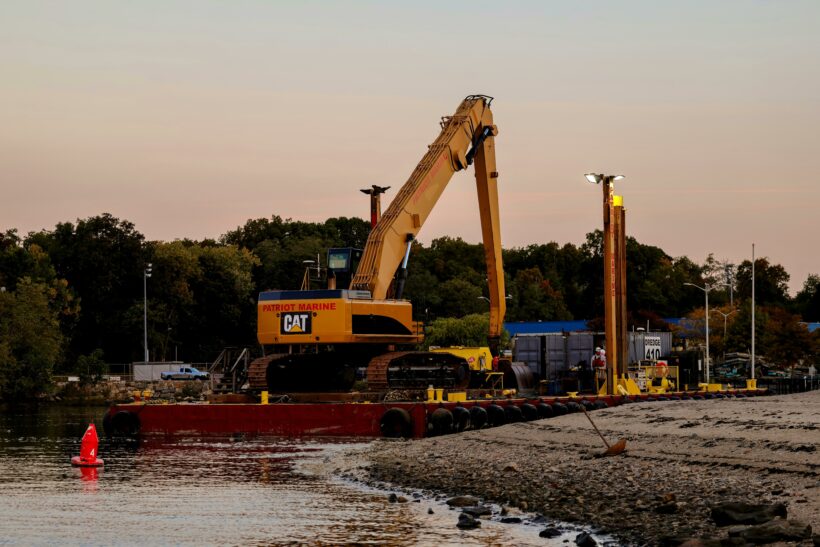Dredge spoil
What are dredge spoils?
Dredge spoils are the materials like sand, silt and soil that gets accumulate on the bottom of a waterbody which are removed during dredging. Dredging is defined as the clearing of water bodies by removing sediments which can be organic, inorganic, contaminated and hazardous dredge spoils. Although the waterways are usually clean, over a period of time, these materials also settle into the waterways which in turn can choke the channels, which causes water pollution and interferes with the aquatic environment. Dredging plays a major role in ensuring that rivers, harbors and even reservoirs are in their best desirable depths and are able to serve their purposes efficiently.
What is dredging in civil engineering?
In civil engineering, dredging is defined as an important exercise which helps for the construction and maintenance of the water infrastructures. The dredging entails the process of excavating up the sediment which usually tends to accumulate within the bottom of rivers, harbors or even ocean waters which are used to keep the channels clear for navigation, to avert flooding, and even for enhancing the movement of water.
What are the different types of dredging?

- Mechanical dredging: Mechanical dredging relies on equipment like clamshell dredges, backholes, or excavators to physically scoop sediments from the waterbed. This method is often preferred for projects requiring precise excavation or in areas with compact or rocky materials.
- Hydraulic dredging: Hydraulic dredging employs the method of suction, by pumping sediments already drawn into pipes to storage or disposal sites. This method is applicable in operations where there is a need to handle a big volume of sediments across a wide area within a very short time.
- Sediment dewatering methods: When dredged material is collected, it is normally placed for dewatering treatment before disposal or application. Dewatering methods include the use of geotextile tubes, gravity settling, or filtration along with others to remove excess water in the sediments.
- Managing dredge spoils: Handling the dredge spoils effectively is usually a crucial step for a successful dredging project. The options range from the simple disposal to a creative reuse, but each of the choices depends on the factors like sediment quality, project goals, and other environmental guidelines.
Disposal and beneficial use of dredge spoil
- Open water disposal: Some of the dredge spoils are mostly relocated to open water disposal sites, which are often deep-sea areas which are selected for their minimal environmental sensitivity. This method can be considered cost-effective but mostly requires thorough environmental assessments to ensure the minimal disruption to our marine ecosystems.
- Landfill disposal: When contaminated dredged material is present and the quality for their reuse is not adequate, the final option is turning it to landfill disposal. This means placing the wastes within the controlled engineered landfills which are constructed and managed with leachate collection systems and groundwater monitoring to avert pollution of surrounding lands.
- Beneficial reuse: Beneficial reuse is now increasingly popular as suitable dredge spoils which can contribute to projects like beach nourishment, habitat restoration, or construction are used efficiently. This practice will not only reduce the demand for new raw materials but will also offer a sustainable way to manage the residual dredged sediments.
Environmental considerations and regulatory framework
- Sediment quality assessment: During dredging operations, a prior evaluation of quality of the sediments is usually essential in order to check or establish whether the provided excavated materials contain toxic or harmful substances or not. The conclusions will reinforce the decisions on the disposal of the dredged materials and/or for the possible reuse of the provided dredged materials.
- Habitat protection: An extra effort should be always made to protect the water body and our ecosystem while dredging operations are underway. Dredging mostly tends to destroy the benthic zone (the bottom surface of a water body) and the animals within the sediments. Hence maintaining a healthy and generous aquatic ecosystem is a vital component during dredging activities
- Compliance with permitting: Dredging projects are mostly subjected to the strict permitting and regulatory standards within the local, national, and often international levels. Permits can or may specify the disposal sites, monitor the sediment levels present, and can also outline precautions to protect our habitats.
In the field of civil engineering, dredging serves a vital purpose in sustaining the structure of waterways and aiding in the construction and rehabilitation of various components. Dredge spoils, which are the byproduct of these efforts, require careful handling to mitigate the environmental impacts. Whether through open water disposal, landfill containment, or innovative reuse, the management of dredge spoils has evolved, with environmental considerations at the forefront. So by navigating and regulating the requirements and prioritizing our sustainable practices, projects can achieve their goals while safeguarding our aquatic ecosystem also.
